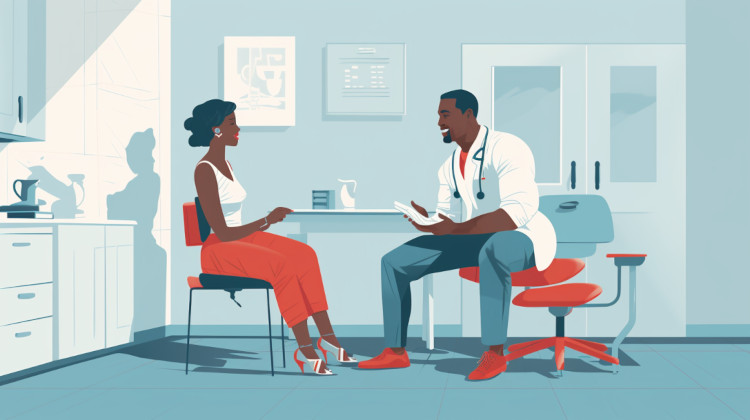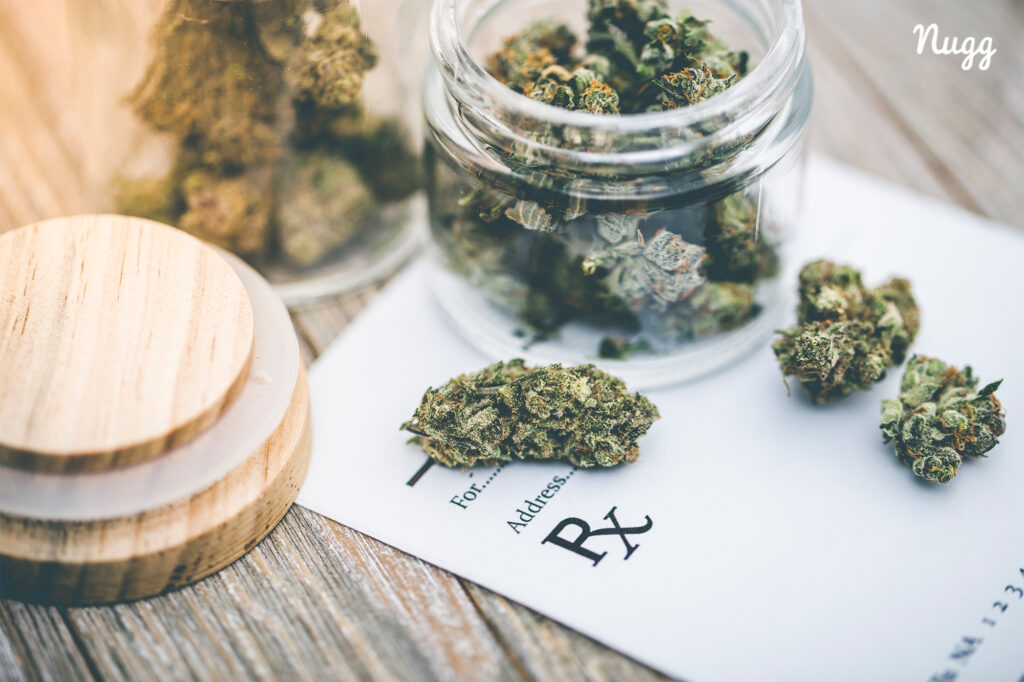
Considered the body’s largest organ, the skin protects us from infection-causing germs and regulates body temperature. When damaged, skin follows a healing process to repair itself. Sometimes, even with additional care, the wound does not heal, resulting in a chronic wound.
Chronic wounds affect about 5.7 million people in the US and often affect older people and those in poor health. The most common chronic injuries are skin ulcers on the feet, legs, or bony parts of the body.
Wound care has evolved throughout history. Ancient Greek physicians washed skin ulcers with wine, Egyptian doctors addressed inflammation, and Ayurvedic medicine practices described cleaning and suturing techniques. In the 19th century, the discovery of antibiotics again changed wound care.1
Recently, researchers at the University of Bristol identified a protein that assists the body in repairing its tissues. This discovery has the potential to help experts further understand and accelerate the healing process.
What Causes Skin Wounds and Ulcers?
Anything that breaks the skin can cause a wound. If a chronic wound becomes an ulcer, it is usually due to a lack of sufficient blood flow to the wound.
The four types of skin ulcers each have a different cause:
- Neuropathic/neurotrophic skin ulcers can occur in feet when there is a loss of sensation, often due to diabetes.
- Arterial (ischemic) ulcers can occur when there is reduced blood flow to the hands, feet, and other areas of the body.
- Venous skin ulcers often occur on the legs and are caused by poor blood circulation in either the veins or arteries.
- Decubitus (pressure) ulcers usually occur in bony body areas due to regular force or friction.
Certain risk factors can increase the likelihood of a wound becoming a skin ulcer:
- General unhealthiness
- Neuropathy caused by diabetes
- Atherosclerosis
- Venous insufficiency and other conditions involving blood flow or blood clots
- Heart disease
- Obesity
- Kidney disease
- Alcohol and tobacco use
- Consistent pressure on the skin, combined with a dragging force, friction, or moisture
- Increasing age
- Conditions that limit mobility, like being paralyzed
- Pregnancy
Signs & Symptoms of Skin Wounds and Ulcers
Although symptoms vary among the different types of skin ulcers, some common ones can be described.
If you have a neuropathic skin ulcer, you may experience one or more of the following symptoms:
- An open wound on feet or toes that does not heal or keeps coming back
- Pink, gray, red, brown, or black coloring
- Dry, cracked, or scaly skin
- Redness or rash
- A callus or halo of hard skin around the center of a wound
- Tall borders of skin around the ulcer
- Presence of fluid drainage
- Strong odor
If you have an arterial (ischemic) ulcer, you may experience one or more of the following symptoms:
- Shiny, dry skin near the wound that may appear stretched out
- Loss of hair near the wound site
- Reduced blood flow is noticeable when lying down or when feet are raised
- Red, yellow, gray, black, or other dark coloring
- Deep wounds and possible visibility of muscles or tendons
- Raised edges around the wound
- Lack of bleeding or pain
If you have a venous skin ulcer, you may experience one or more of the following symptoms:
- A shallow wound with an abnormal shape
- Skin around the wound that is hard and discolored
- Dull ache
- Bad odor
- Itchiness
- Oozing pus or other fluid
- Swelling
If you have a pressure ulcer, you may experience one or more of the following symptoms:
- Discoloration of skin
- Painful or tender skin
- Swelling
- Changes in temperature in some regions of the skin
- Loss of layers of skin
- Pus or other fluid drainage from open skin
Can Cannabis Help Alleviate Skin Wound and Ulcer Symptoms?

The effects of cannabis on wound healing and skin ulcers are not clearly understood. Current studies provide poor-quality evidence with conflicting results, and significant human studies are lacking.
- In a 2021 study, researchers applied a topical cannabis-based medicine to the venous leg ulcers of 14 elderly patients every second day. Compression bandaging was also used. Within a median of 34 days, researchers observed complete wound closure in 81% of the treated ulcers.2
- Topical CBD was looked at in a 2018 observational study of three patients with a blistering skin disorder characterized by pain, inflammation, reduced mobility, and infection. In all 3 cases, the wounds healed faster, and although this was a small study, its positive results support further randomized clinical trials.3
- A 2019 study explored the safety of topical CBD for skin healing in patients with common skin disorders over a period of three months. CBD was observed to be safe and effective for treating symptoms of certain skin disorders and improved the quality of life of the patients.4
- In a 2018 clinical trial, two older women with leg ulcers caused by a rare condition were treated with a topical cannabis-based medicine over an average of 76 days. Researchers observed positive results of safety and efficacy in both patients; the wounds healed rapidly, and the patients experienced a reduction in wound-related pain symptoms.5
Although researchers have reported mostly positive results, findings are limited by their small study size, lack of control groups, and, in some cases, their self-reported nature.
Even so, these results show that CBD has the potential to speed up wound healing, even in stubborn wounds, reduce wound-related pain, and decrease inflammation without adverse effects. These studies support further randomized clinical trials on humans of varying ages, especially to investigate whether cannabis can treat specific types of skin ulcers.
Medical cannabis is considered relatively safe, but we still don’t know the long-term effects of using it to heal skin ulcers or wounds. Topical cannabis is often recommended for skin conditions. Still, it may include additional ingredients whose effects are unknown and which are usually not made to be used on an open wound.
There is insufficient evidence on smoked or oral cannabis for treating skin wounds, although they show potential for symptoms of pain or inflammation.6 Consult with a doctor before using cannabis for a skin ulcer or other chronic wound.
Legality and Doctor’s Recommendation
To determine if your state considers skin wounds or skin ulcers to be a qualifying condition for medical marijuana, check out our Laws & Regulations section for the medical cannabis rules for your state.
If you find that your state recognizes skin wounds or skin ulcers or its symptoms as a qualifying medical condition, you can seek a doctor’s recommendation to get your medical cannabis card in your state.
How NuggMD Can Help

NuggMD is the nation's leading medical marijuana technology platform, serving patients in over half of the United States. We’ve connected over 2,000,000 patients with their new medical marijuana doctors face-to-face via our state-of-the-art telemedicine platform.
We believe that every human being has the right to explore the benefits of medical cannabis and are fully committed to helping each patient explore all their options in their journey to wellness. For further information on whether you qualify for medical cannabis, select your state.
References
- Shah JB. The history of wound care. J Am Col Certif Wound Spec. 2011;3(3):65-66. doi:10.1016/j.jcws.2012.04.002
- Maida V, Shi RB, Fazzari FGT, Zomparelli L. Topical cannabis‐based medicines – A novel adjuvant treatment for venous leg ulcers: An open‐label trial. Experimental Dermatology. 2021;30(9):1258-1267. doi:https://doi.org/10.1111/exd.14395
- Chelliah MP, Zinn Z, Khuu P, Teng JMC. Self-initiated use of topical cannabidiol oil for epidermolysis bullosa. Pediatric Dermatology. 2018;35(4):e224-e227. doi:https://doi.org/10.1111/pde.13545
- Palmieri B, Laurino C, Vadalà M. A therapeutic effect of cbd-enriched ointment in inflammatory skin diseases and cutaneous scars Clinical trial. Clin Ter. 2019;170(2):93-99. doi:https://doi.org/10.7417/CT.2019.2116
- Maida V, Shi RB, Fazzari FGT, Zomparelli L. Topical cannabis‐based medicines – A novel paradigm and treatment for non‐uremic calciphylaxis leg ulcers: An open label trial. International Wound Journal. 2020;17(5):1508-1516. doi:https://doi.org/10.1111/iwj.13484
- Hill KP, Palastro MD, Johnson B, Ditre JW. Cannabis and Pain: A Clinical Review. Cannabis and Cannabinoid Research. 2017;2(1):96-104. doi:https://doi.org/10.1089/can.2017.0017
- Weigelt MA, Sivamani R, Lev‐Tov H. The therapeutic potential of cannabinoids for integumentary wound management. Experimental Dermatology. 2020;30(2):201-211. doi:https://doi.org/10.1111/exd.14241
The information in this article and any included images or charts are for educational purposes only. This information is neither a substitute for, nor does it replace, professional legal advice or medical advice, diagnosis, or treatment. If you have any concerns or questions about laws, regulations, or your health, you should always consult with an attorney, physician or other licensed professional.

